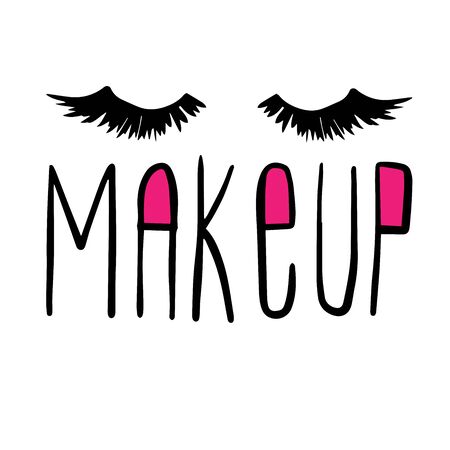Choosing the Right Eye Makeup Remover
If you want to remove mascara without damaging your lashes, selecting the right eye makeup remover is essential. There are several types of removers on the market, each catering to different needs and mascara formulas. Oil-based removers are highly effective for breaking down stubborn or waterproof mascaras, as oil can dissolve the waxes and polymers that make these formulas long-lasting. If you often wear waterproof mascara, an oil-based formula should be your go-to; just make sure it’s safe for sensitive eyes. Micellar water, on the other hand, is a gentle yet powerful option perfect for everyday or non-waterproof mascaras. Micellar technology lifts away makeup and impurities without harsh rubbing, making it ideal for those with sensitive skin or lashes prone to breakage. Makeup wipes offer convenience, especially when you’re on the go or need a quick fix, but they may require more pressure and may not fully remove waterproof products—so use them as a backup rather than your primary method. Ultimately, the best remover depends on your mascara type: stick with oil-based for waterproof formulas, and try micellar water for regular use. Always check labels for ophthalmologist-tested products if you have sensitive eyes or wear contact lenses.
Step-by-Step Removal Techniques
Taking off mascara properly is crucial to keep your lashes healthy and prevent breakage. Here’s a practical, step-by-step guide that uses gentle tools and motions to remove every trace of mascara—without any tugging or pulling.
1. Choose the Right Remover
Select an eye makeup remover that suits your mascara type (regular or waterproof). Oil-based removers work best for waterproof formulas, while micellar water is ideal for everyday mascara.
2. Gather Your Tools
| Tool | Purpose |
|---|---|
| Cotton Pads | Gentle surface cleansing |
| Q-tips (Cotton Swabs) | Precise removal on lash lines |
| Reusable Makeup Rounds | Eco-friendly alternative to cotton pads |
3. Soak and Hold
Pour your chosen remover onto a cotton pad until it’s damp but not dripping. Gently press the pad against your closed eyelid for 10–15 seconds to dissolve the mascara. Avoid rubbing—let the product do the work.
4. Wipe with Care
After soaking, softly swipe the cotton pad downward along your lashes. Use slow, gentle motions to avoid pulling out or breaking fragile hairs. For stubborn spots, wrap a Q-tip in a little remover and roll it along your lash line for precision cleaning.
Lash-Safe Motion Comparison
| Technique | Lash Safety Rating |
|---|---|
| Rubbing Back-and-Forth | Poor (Risk of lash loss) |
| Press-and-Hold + Downward Swipe | Excellent (Minimizes damage) |
5. Final Rinse and Moisturize
Once all mascara is gone, rinse your eyelids with lukewarm water to remove residue. Pat dry with a soft towel and apply a lightweight lash conditioner or natural oil (like castor oil) to nourish and strengthen your lashes overnight.

3. Common Mistakes to Avoid
When it comes to removing mascara, many people unknowingly make mistakes that can seriously compromise the health and appearance of their lashes. Rubbing your lashes aggressively is one of the most common errors—this not only weakens your natural lashes but also increases the risk of breakage and lash loss. The delicate skin around your eyes is particularly sensitive, so harsh movements can cause irritation, redness, and even premature aging.
Another frequent mistake is using harsh or unsuitable products, such as regular soap or facial cleansers not designed for eye makeup removal. These products can dry out your lashes and strip away natural oils, leaving them brittle and prone to falling out. Additionally, skipping the step of soaking a cotton pad with remover before wiping can force you to tug at your lashes, which leads to further damage.
Avoid using excessively hot water, as this can dehydrate both your lashes and the sensitive eyelid area. Finally, never try to remove waterproof mascara by picking or pulling at your lashes. This bad habit can cause trauma to the lash follicles, resulting in sparse or uneven lash growth over time.
By steering clear of these typical mistakes, you protect your lashes from unnecessary stress and ensure they stay strong and healthy—even if you wear mascara daily.
4. Post-Removal Lash Care
Taking care of your lashes after removing mascara is essential for keeping them healthy, strong, and less prone to breakage. Here’s how you can nourish and protect your lashes with effective post-removal practices tailored to American beauty routines.
Lash Nourishing Tips
- Apply a Lash Serum: Invest in a high-quality lash serum that contains peptides, biotin, or panthenol. These ingredients help stimulate growth and strengthen your lashes over time.
- Use a Lash Conditioner: Conditioning treatments, often infused with natural oils like castor oil or vitamin E, hydrate and soften your lashes, making them more resilient.
- Gentle Cleansing: Avoid harsh rubbing or tugging when cleansing your face. Instead, use a soft cotton pad soaked in micellar water or a gentle oil-based cleanser specifically formulated for eyes.
Recommended Products & Practices
| Lash Care Product | Main Benefit | How to Use |
|---|---|---|
| Lash Serum | Promotes growth and strength | Apply along the lash line nightly after cleansing |
| Lash Conditioner | Nourishes and hydrates lashes | Brush onto clean lashes before bed |
| Micellar Water | Gently removes residue without drying out lashes | Sweep over closed eyes with a cotton pad; no rinsing needed |
| Coconut or Castor Oil | Natural conditioning and softness | Dab lightly on lashes using a clean spoolie brush once daily |
Best Practices for Healthy Lashes
- Avoid waterproof mascara daily—its harder to remove and can cause more lash loss.
- Replace eye makeup products every three months to prevent bacterial buildup.
- If you notice irritation or lash thinning, take a break from eye makeup and focus on nourishment.
- Don’t forget to maintain a balanced diet rich in vitamins A, C, E, and biotin for optimal lash health.
Your Lashes Deserve TLC!
Nurturing your lashes after every mascara removal not only preserves their natural beauty but also preps them for your next glam look. By incorporating serums, conditioners, and gentle cleansing into your routine, you’re investing in long-lasting, flutter-worthy lashes that stand up to any trend.
5. When to Seek Professional Advice
While most mascara removal mishaps can be fixed with improved techniques and gentle products, there are situations where it’s important to consult a professional. If you notice persistent redness, swelling, itching, or burning around your eyes after removing mascara—even after switching removers or adjusting your routine—don’t ignore these symptoms. Prolonged irritation could signal an allergic reaction, infection, or another underlying eye health issue that requires medical attention. Likewise, if your eyelashes begin to thin noticeably, fall out in clumps, or fail to grow back over several weeks despite careful handling, it’s time to schedule a visit with a dermatologist or ophthalmologist. These experts can help diagnose any conditions such as blepharitis, dermatitis, or even damage from harsh removers. Remember, your vision and lash health are worth protecting; when in doubt, seek advice from a qualified eye care professional to prevent long-term issues and keep your lashes looking their best.


